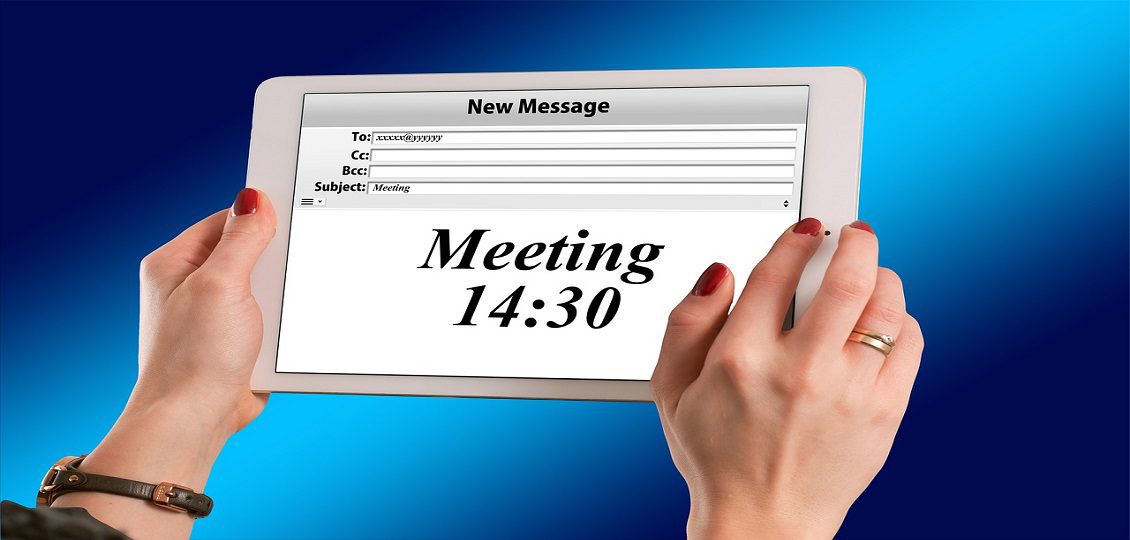By Sharon M Ross
We have all heard it – another meeting? With a small groan after that question. Heck, you have probably said it yourself. It seems that meetings run too long, run in circles, and seem to not accomplish very much. That is true if they are done wrong. But if they are done right, meetings can get share information and get answers quicker with less friction than emails that go round and round without end. But how do you have a productive meeting rather than a mind numbing, time sucking meeting? Here are a few basic tips to try for your next meeting.
Tip 1 – Have an Agenda
Why are you calling a meeting? What do you want to accomplish? Do you want to inform? Do you want to have decisions made? Do you want to explore options? No matter why you want to have the meeting, you need to communicate to those you are inviting what the meeting is going to be about. Your agenda can be very formal – topic, lead person, time. Your agenda can be informal – short sentence on why you want to meet. Or something in between.
The point is, you need to know WHY you want to meet and you need to tell people what that WHY is. The agenda will drive other decisions like, tip 2 – inviting the right people.
Tip 2 – Invite the Right People
You need to invite the right people. Nothing is worse than getting to a meeting and finding out that a key person wasn’t even invited. It wastes everyone’s time and potentially will make it harder to get the right people together the next time.
If you need a decision made, you need the people who have the authority to make that decision. You may also need the influencers, those who can affect the decision maker’s decisions. You might need to invite people with very special knowledge that the decision makers need.
If you need to inform, who needs to know? If you can get all those together at one time, you are less likely to have to repeat yourself, though there is no guarantee of that.
If you are gathering to brainstorm solutions, you will want to make sure you have the subject matter experts invited.
Knowing who to invite is just part of getting them to your meeting, the other piece is tip 3 – picking the right day and time.
Tip 3 – Pick the Right Date and Time
Fortunately, modern tools make it easier to find time on people’s calendars to have a meeting, but it still can be tricky. If you have team members who are on different systems, you may not have visibility into all of the schedules. If you work in an organization that routinely has people double and triple booked, the calendars might appear solidly booked. What are you to do? Having the list of people and identifying who is a MUST have and how is nice to have is the place to start. Then, you can look at the calendars and find the time where the majority key people show available. Then, if there is someone who doesn’t show available but is key, you can reach out to that person and see how flexible he/she is.
Other things to keep in mind are time zones and cultural influences. In a global world and virtual meeting capabilities, make sure you don’t pick a time that requires someone to get up super early or stay super late, if you can help it. If you must choose a time that is difficult for some, check with them before you set the meeting to make sure they can accommodate it. Be aware of local habits like the programming team all goes to lunch at 1pm because that is when the operations team moves code to the testing environment. Also, be aware of holidays of other countries if you have a global team.
Tip 4 – Provide Any Background Resources Ahead of Time
So, now you have the meeting on the calendar and the right people coming. What do they need to know ahead of time?
If the meeting is for a decision, ensure the decision makers have all the background information needed so that the meeting can be used to answer any final questions and then call for a decision. If the meeting is to inform, are there documents that the participants can read ahead of time to have deeper discussions within the meeting? If the meeting is to collaborate and brainstorm, what should they know coming into the meeting?
Send any materials out with as much time as possible in advance. It doesn’t guarantee they will read these materials, but it ups your chances and improves the chances for a productive meeting.
Tip 5 – Publish Notes and Follow Up Tasks
After you host the meeting, publish notes. As with the agenda, these notes can be informal or very formal or anything in between. What you will want is document who attended, at least high level topics discussed, any decisions made, and any next steps needed.
If there are follow up tasks, assign a point person and give a soft deadline for the item to be done if at all possible. People will give you feedback if they think they are the wrong person to be assigned or if they need more time. These items also become part of the agenda for the next meeting if you set one. If you choose not to have a follow on meeting, this list allows you to keep track of what needs to be completed.
These tips sound simple and sometimes they are very simple to put into action. Other times, depending on the personalities involved, it is not so simple. But if you keep consistent with your actions, you improve the chances of a productive meeting and you can begin to have a reputation of having meetings that are not time wasters. This reputation will increase the chances of future meetings to have the right people and also be productive.
About
For more tips on communication and leadership –
Like us at https://www.facebook.com/builtbywarriors/











































